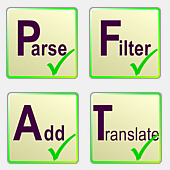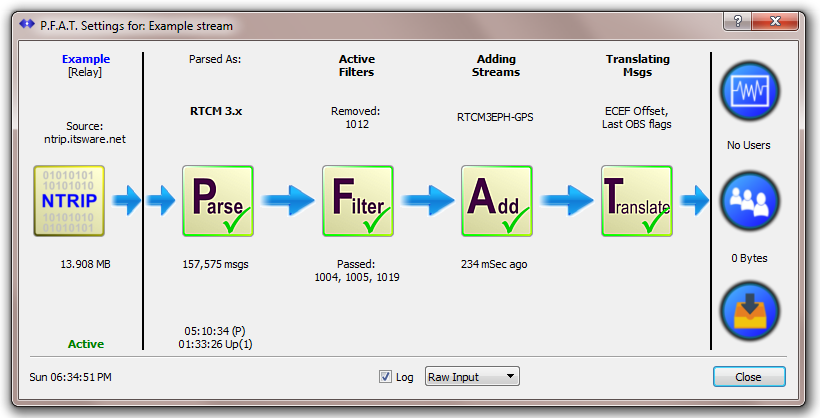 SNIP provides a a set of message transformation functions called PFAT™. The abilities of PFAT allow any parsed RTCM3 message stream to be manipulated to form new streams with different messages contents.
SNIP provides a a set of message transformation functions called PFAT™. The abilities of PFAT allow any parsed RTCM3 message stream to be manipulated to form new streams with different messages contents.
Using PFAT on a parsed message stream you can easily:
- Remove unwanted message contents by Filtering them out
- Adding missing message content to a stream such as orbital data
- Or Translating the Base station’s ECEF datum to a different frame of reference such as NAD83, WGS84, GDA94, ITRF, etc.
As well as many other transformation uses. PFAT can also be used to published and express the same stream in multiple ways for different end users. An example might be a two streams, one using an NAD frame of reference and another with an ITRF frame of reference. Another example might be publishing a stream with smaller observation messages containing only L1 content for some users.
The PFAT controls can all be reached with the stream’s right-click menu. Or the PFAT general purpose dialog window (shown below) can be used to visualize the overall set of settings in place for each stream.

In the above image a stream is being filtered, added, and translated to produced a stream with only GPS observations (GLONASS observations were removed) and orbital data was added and the ECEF values were adjusted to a new datum.
PFAT has it’s own section in the SNIP knowledge base.
You can read more about the general uses of PFAT here.
